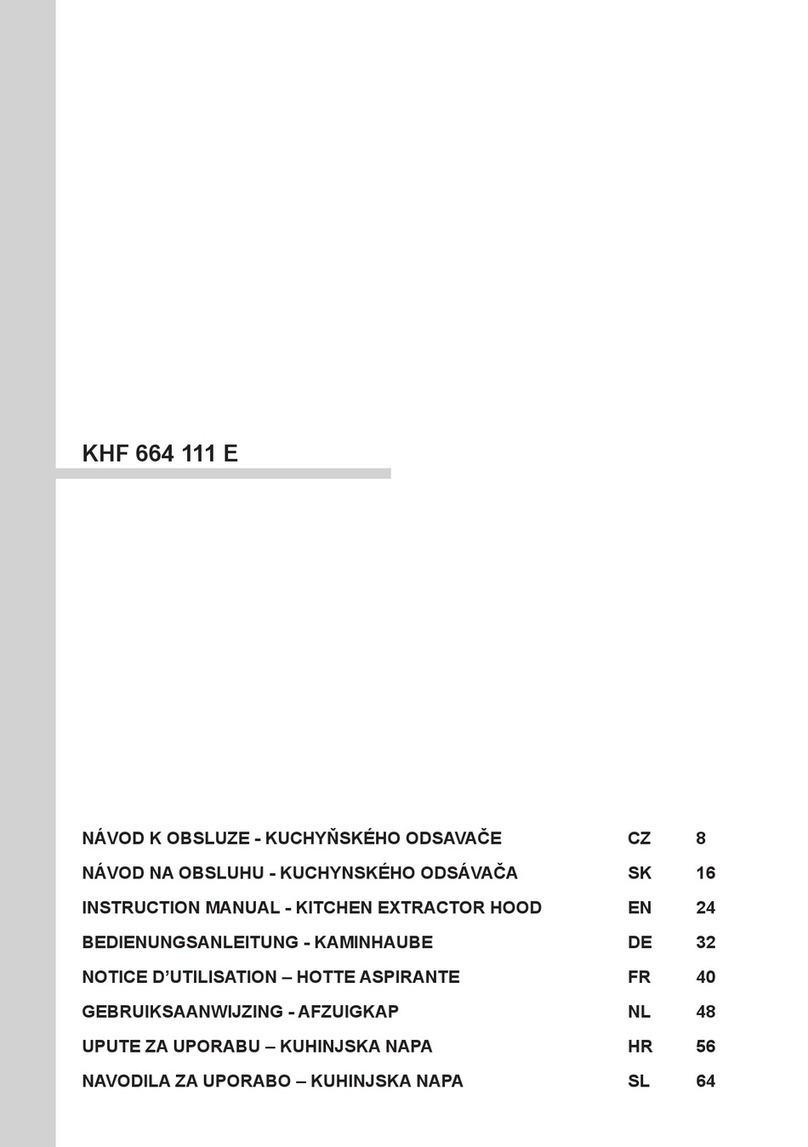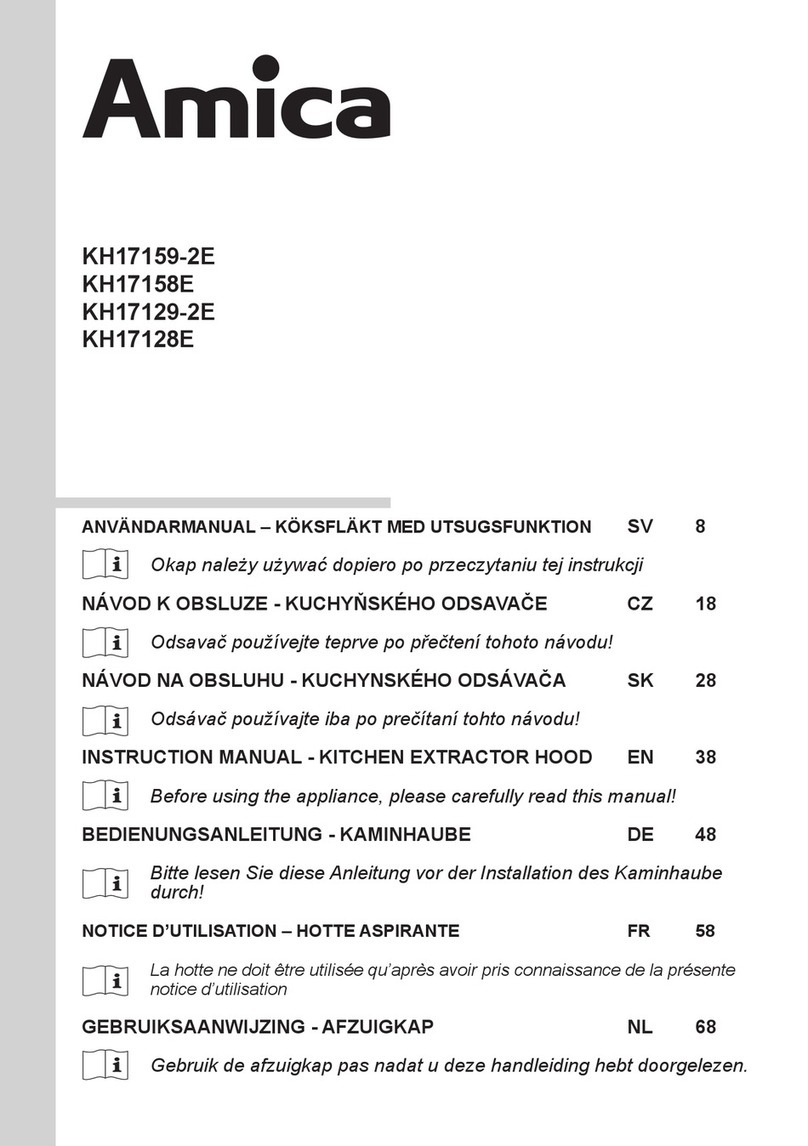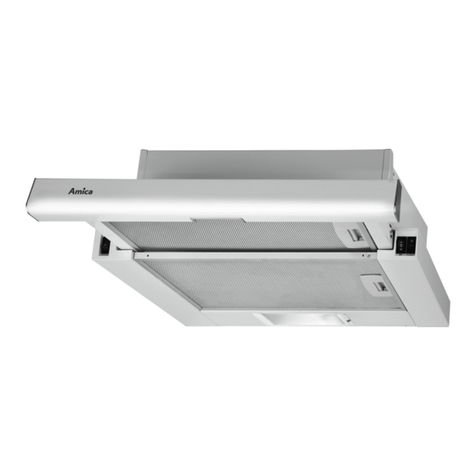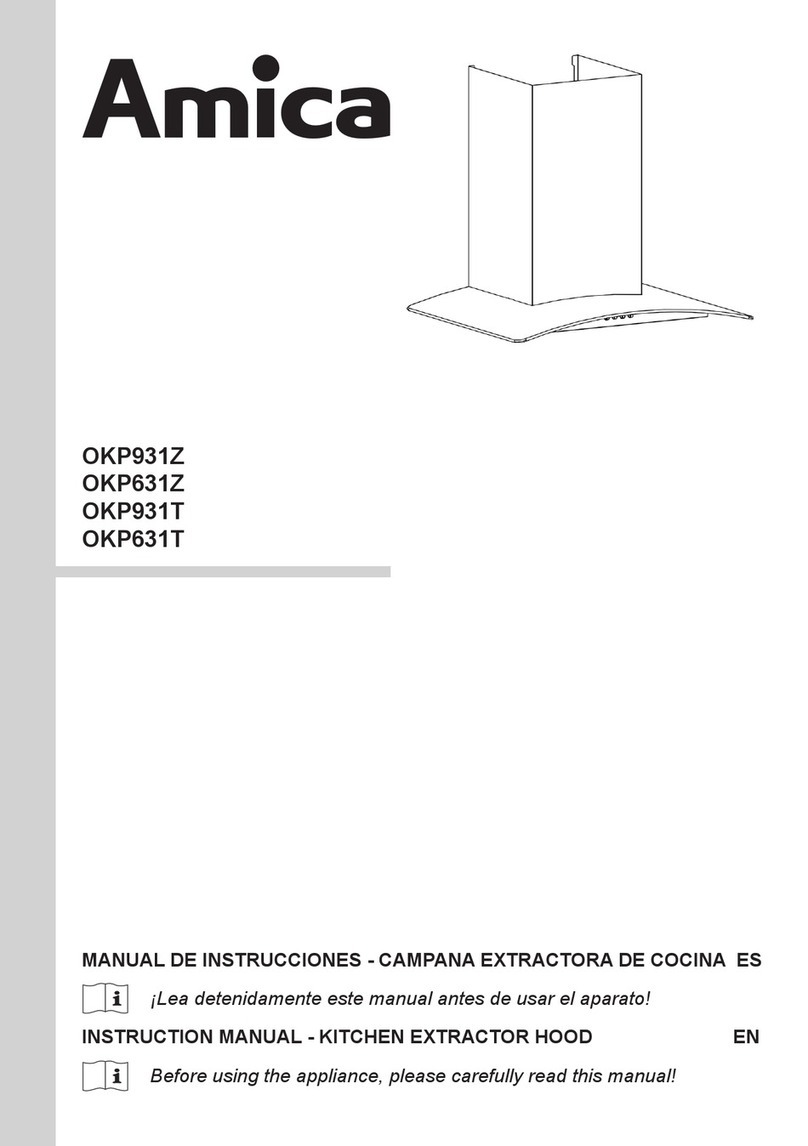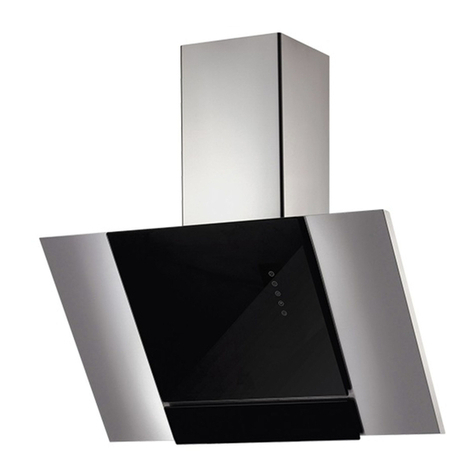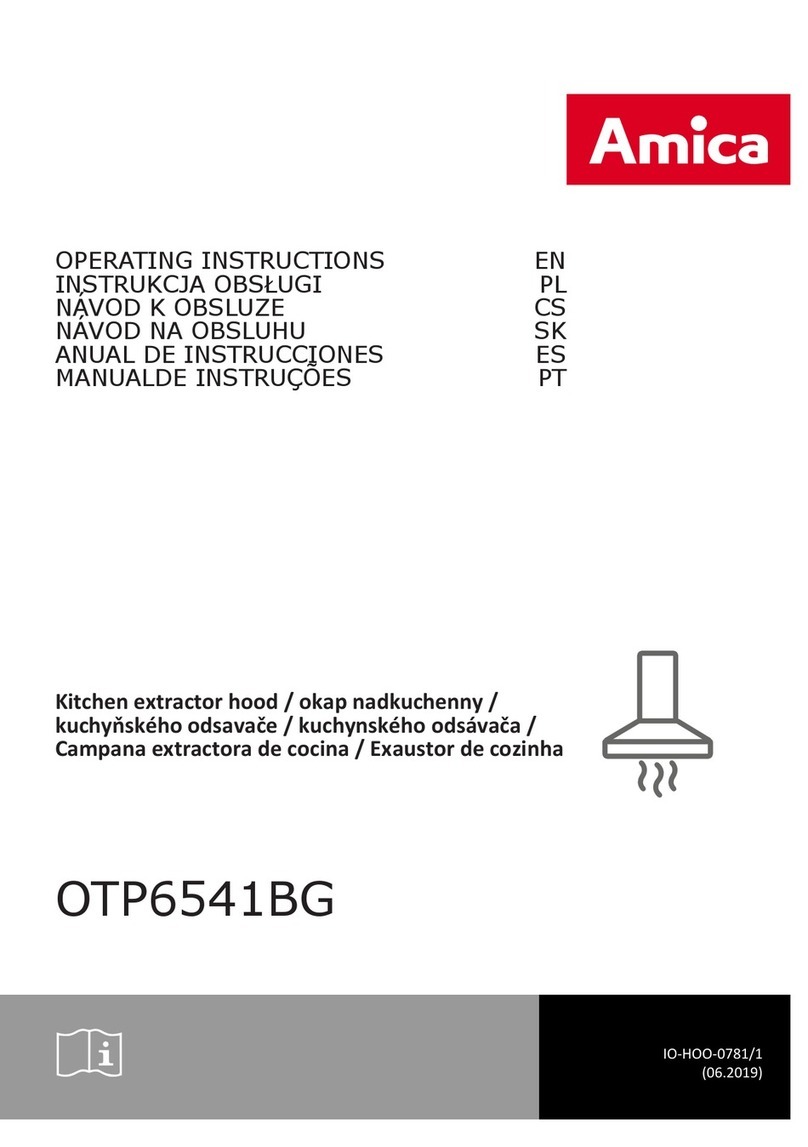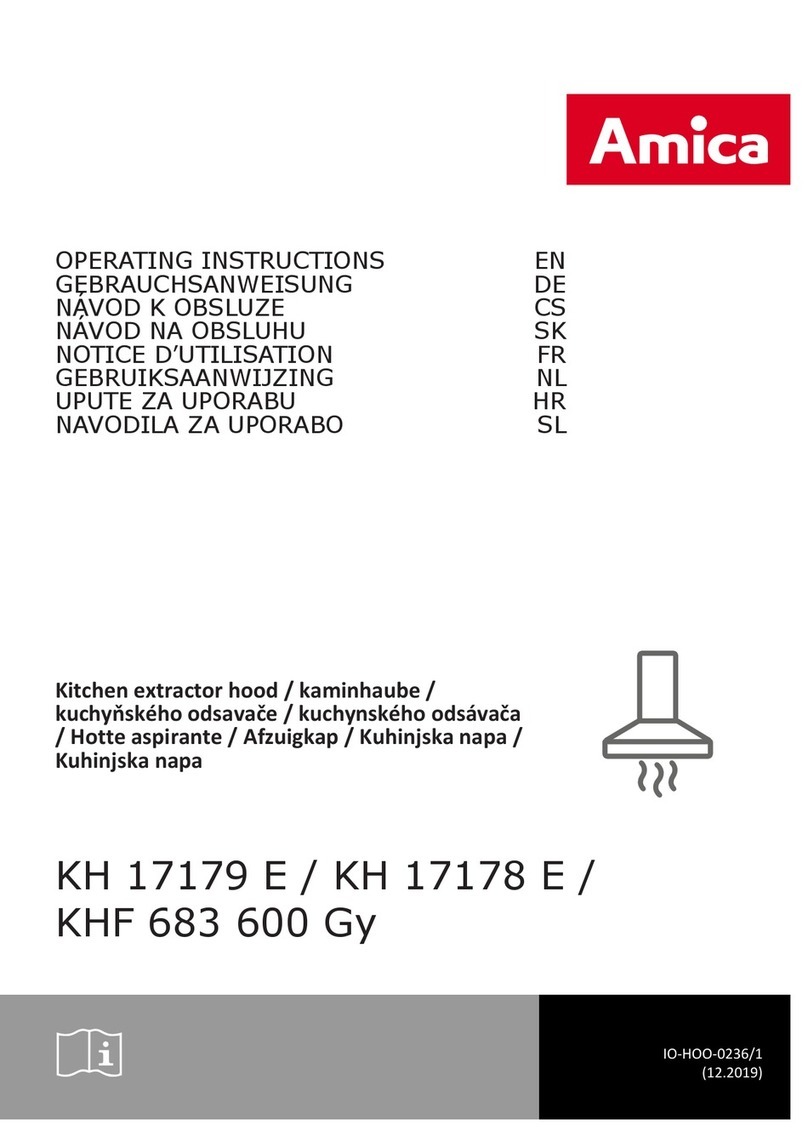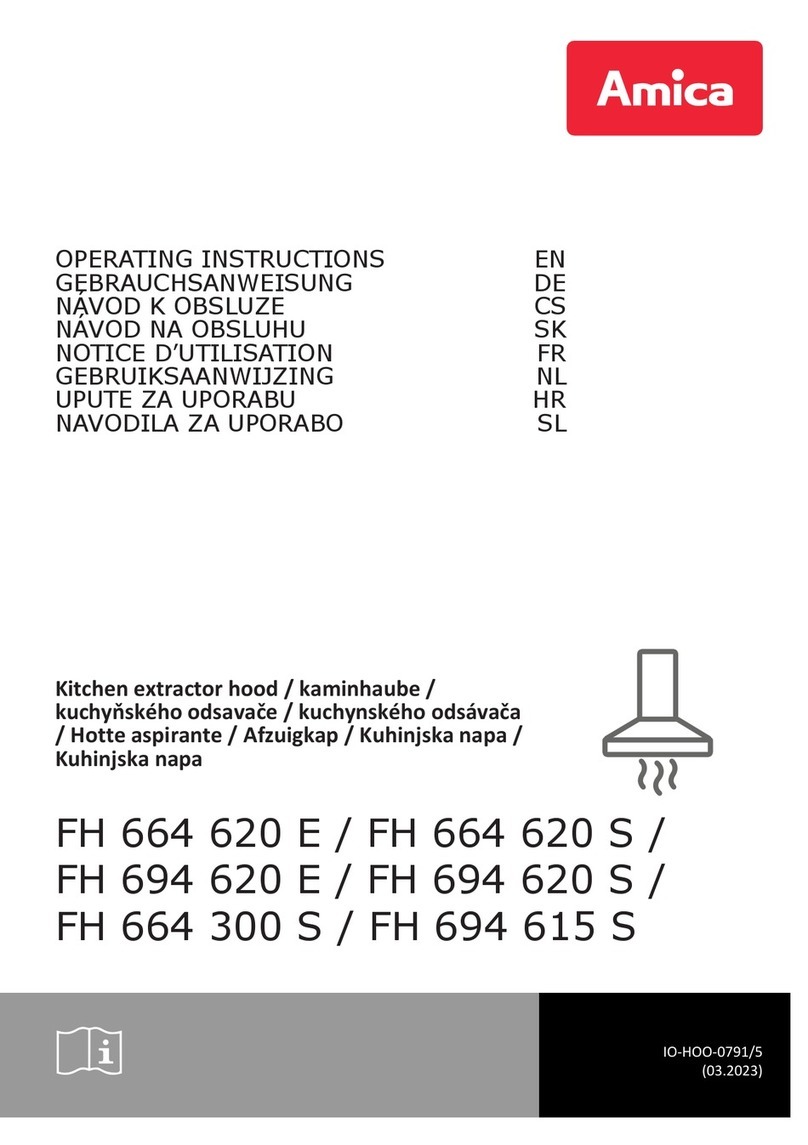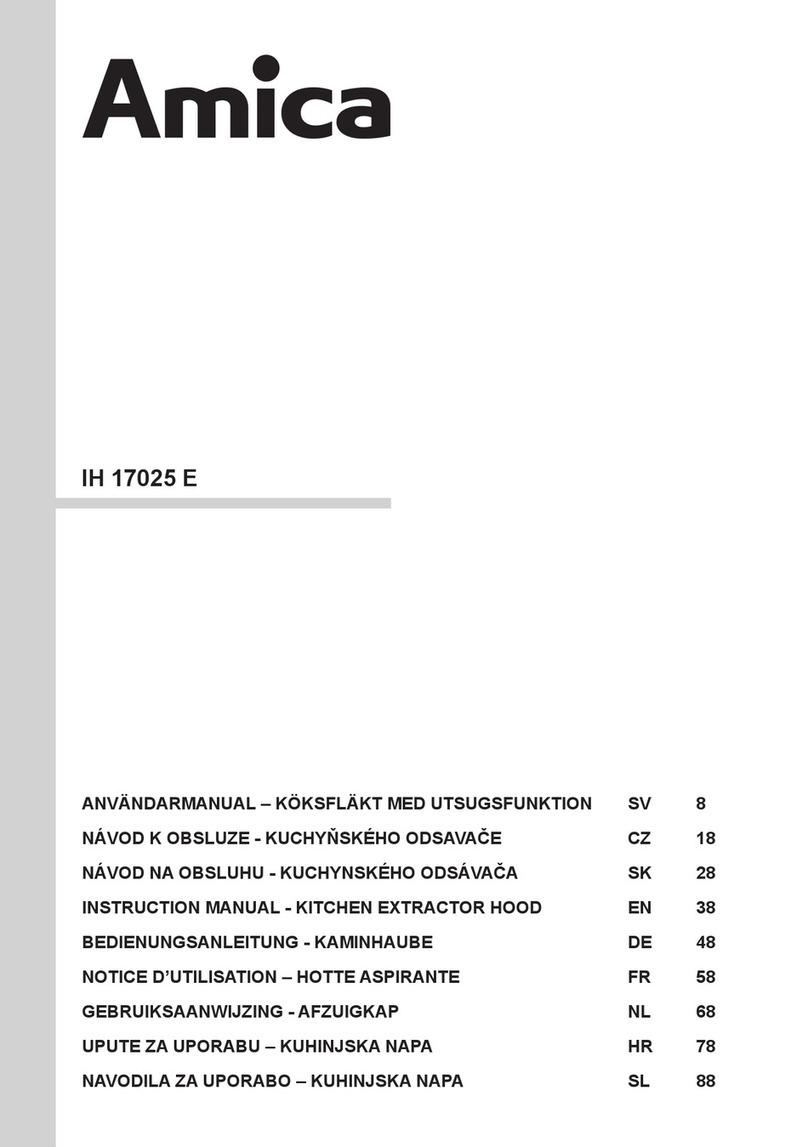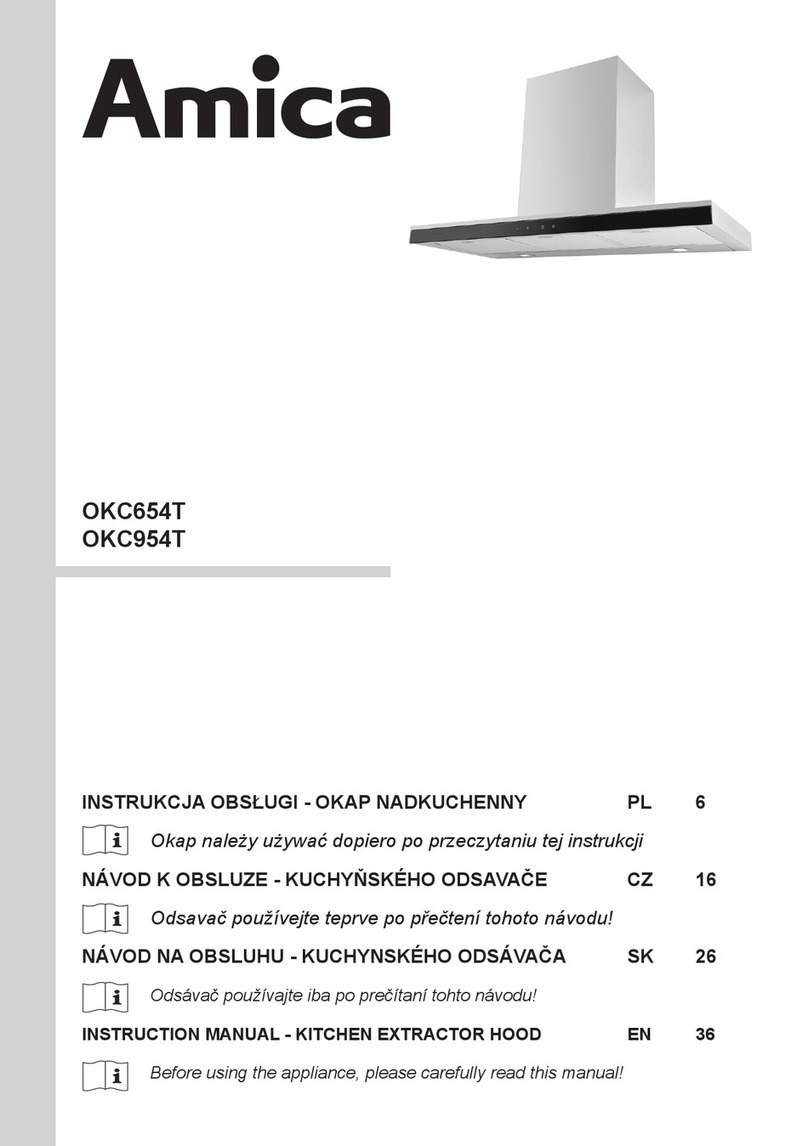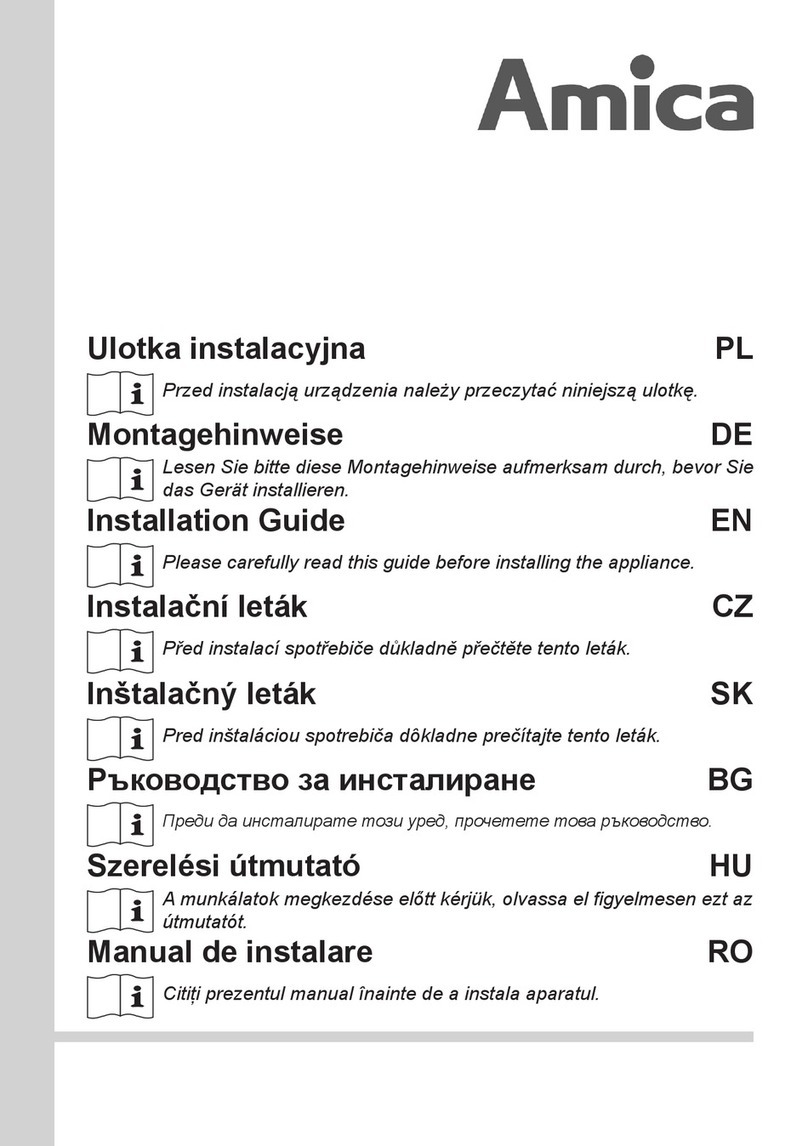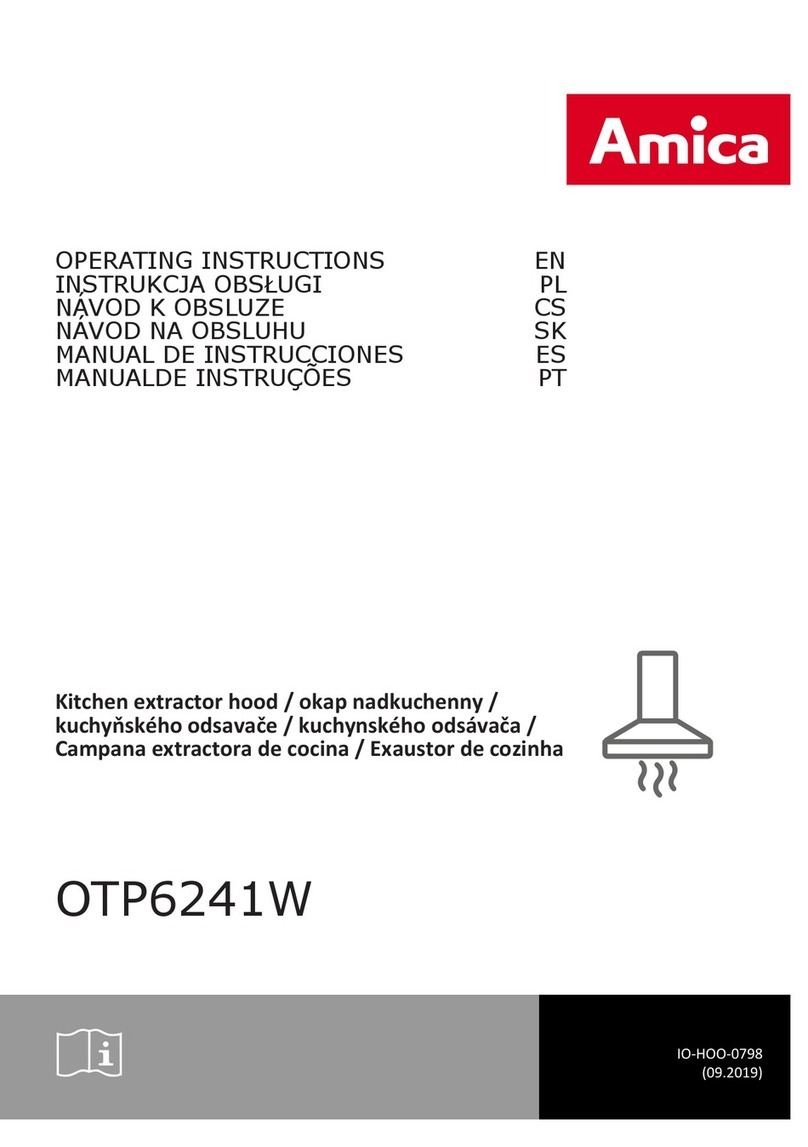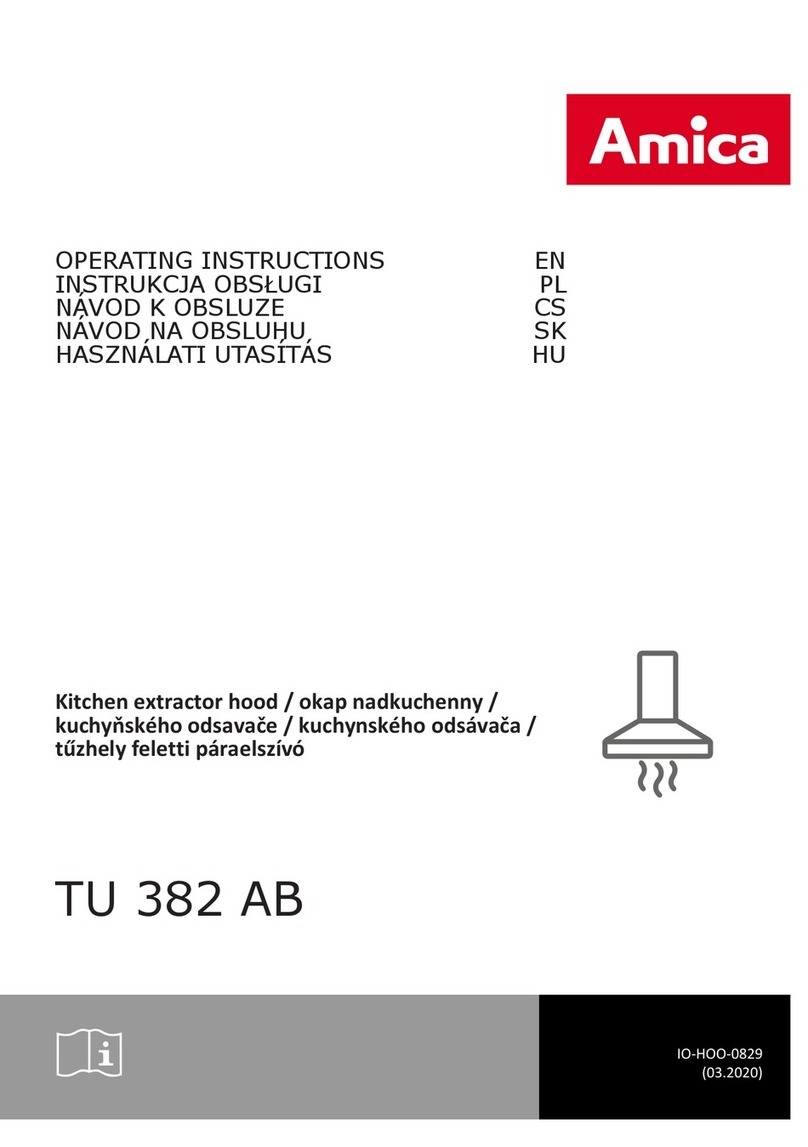V Installation
To install the hood perform the following operations:
1. mount the hood body [C],
2. connect the hood to power supply network.
1. Installation of the hood body
a) trace a vertical line on the wall to indicate the center of the cooker plate, dismantle the
grease filter, hold the hood body „A” to the wall with its indicated center point on the vertical
line, with the distance between the holes and the cooker plate at least 710 mm (Fig. 2). Note:
make sure that the hood body „A” is level. b) mark the locations of
fixing holes on the wall
c) drill the holes as
marked on the wall, using drills of
diameter corresponding to the
attached expansion plugs, drive the
plugs in and then screw the hood
body „A” to the wall (Fig. 3).
Fig. 3
2. Podlaczenie do sieci elektrycznej i kontrola dzialania.
Po podlaczeniu do sieci elektrycznej (zgodnie z okreslonymi wczesniej wymaganiami) nalezy
sprawdzic poprawnosc dzialania silnika oraz oswietlenia okapu.
3. Setting the operation mode of the kitchen extractor hood
3.1 Setting the air extractor mode of operation of the hood
In the extractor mode air is discharged to the outside by a special conduit. In that
setting any carbon filters shall be removed. The hood should be connected to the opening
discharging air to the outside by means of a rigid or flexible conduit of 120 mm diameter,
which should be purchased in a shop selling installation materials.
A qualified installer should be commissioned to make the connection.
3.2 Setting the odour absorber mode of operation of the hood
In this option filtered air returns to the room through openings in the front of the hood.
In this setting it is necessary to install the carbon filter (Fig. 6).
III Components
OSC6468 W, OSC5468 W kitchen hood consists
of the following elements (Fig. 1):
Hood casing [A], provided with fan outlets [B] and
[F], set of switches [D], flange [C] for connecting
the ventilation conduit.
Fig. 1
IV Operating conditions
1. The kitchen hood was designed for removal of kitchen fumes to the outside. It should be
connected to an appropriate ventilation duct (do not connect the hood to any chimney, smoke
or flue-gas ducts which are in use).
2. The safe distance between a cooker plate and the kitchen hood should be at least 650 mm.
3. Do not leave open flame under the hood. When removing pots from the burners set the
flame to its minimum level.
4. Any food cooked in fat shall be constantly monitored, since
overheated fat can ignite very easily.
5. The textile grease filter should be replaced, and the aluminium
filter should be cleaned at least every 2 months in connection
with the existing fire danger (saturated fat is very flammable).
6. Pull the plug of the power cord from a wall socket before any
filter cleaning or repair operation.
7. If any other non-electric devices are used in the same room as
the hood (e.g. liquid fuel ovens, flow-through or volumetric
water heaters), it is necessary to provide appropriate ventilation
(air supply). Safe operation is possible when during
simultaneous operation of the hood and combustion devices
dependent on air supply the negative pressure of not more than
0.004 milibar is maintained at the location of these devices
inside the room (this point does not apply when the hood is used
as an odour absorber).
8. When connecting to 220V power supply network use an
electric socket in working order.
Fig. 2

